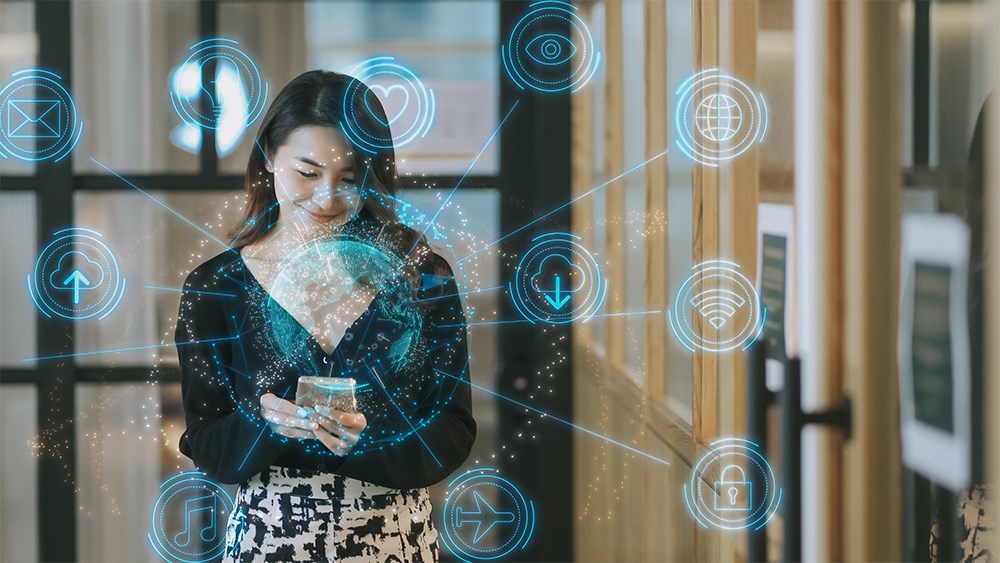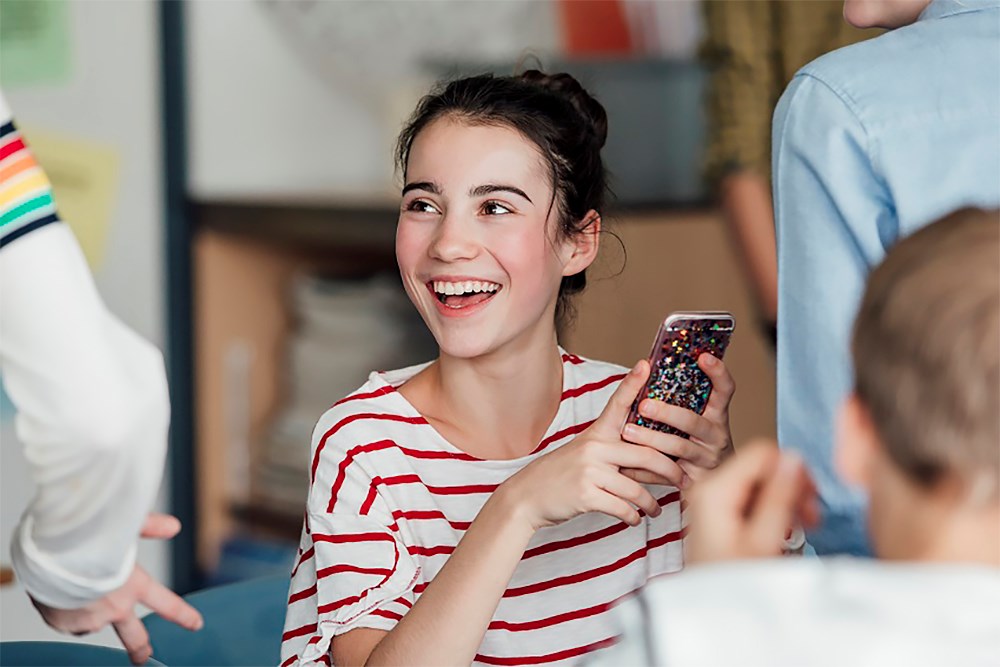Leaving learners to their own devices? The potential of Mobile-Assisted Language Learning
Technology, and mobile devices in particular, is a huge part of our lives; so should we be incorporating mobile devices into language learning? To help explore this question, Chiara Bruzzano reviews some of the evidence on MALL (Mobile-Assisted Language Learning) and in particular looks at its impact on vocabulary acquisition.
If I think about myself until about fifteen years ago, I almost wouldn’t recognise myself: I was a complete technophobe, so much so that I was actually persuaded my mere presence was enough to make a computer go crazy! To be fair, a laptop I owned did actually have a small explosion, so I may have had a bit of a point there, but still: I rejected technology and could not envision myself using it much as a teacher.
Of course, I don’t need to tell you how much that has had to change in the past decade. I thank my lucky stars that I stopped being a technophobe a few years before the pandemic hit, so I wasn’t completely unprepared for online and blended learning, as we have all had to come to terms with technology and integrate it in our teaching.

One area of particular interest in recent years has been the application of mobile devices, such as mobile phones and tablets, to language learning. This is generally called Mobile-Assisted Language Learning (MALL). It is fairly recent research that comes from a longer tradition of studies about technology in language learning. In this article, we will discuss:
- The history of MALL
- What the research says
- One promising area: vocabulary acquisition
Where does MALL come from? A history of acronyms
Technology in language learning was originally called Computer-Assisted Language Learning (CALL). Warschauer (2004) identified three main periods in CALL, covering the 1980s and 1990s:
- Behaviouristic CALL, in which students interacted with content, rather than with each other, using mainframe technology and static text such as word processors. Drills with limited learner feedback were also in vogue.
- Communicative CALL: with advances in technology, students started using PCs, which had a partial role as a tutor, providing more sophisticated feedback and more communicative exercises. This allowed students to produce language rather than just receive it.
- Integrative CALL: thanks to developments in multimedia tools and the internet, the four skills were integrated, with opportunities for learner interaction through computer-mediated communication (CMC)
Of course, the lines between these periods are blurred: just think about apps like Duolingo, which are very modern but employ behaviouristic features like drills.
With time, we have come to what Bax (2003) calls the “normalisation” of technology: we do not necessarily identify it as technology, but just as a standard part of life. Because of this, and reflecting a wider range of technological tools for learning, CALL has been renamed Technology-Assisted Language Learning (TELL). More recently, a focus has emerged more specifically on the affordances of mobile devices for language learning, creating the scope for MALL.
Defining MALL
But what exactly is MALL? As Nicky Hockly reminds us in her article Designer learning, scholars do not necessarily agree on what exactly constitutes mobile learning: is it more about being able to learn anywhere, i.e. in a mobile way, or is it more about the role of portable devices, i.e. mobile devices?

Whichever idea one adopts, a useful distinction is made by Pegrum (2014). He distinguishes between three situations:
1. Devices are mobile: in this case, learners work with mobile devices within the classroom setting or at home in a flipped classroom model;
2. Learners are mobile: in this scenario, learners move around the classroom or the school while they learn, or use their mobile devices during their commute or waiting time to review or reinforce content;
3. The learning experience is mobile: learners use their device for learning in a wide range of real-world situations.
What does the research say?
The easiest way to figure out the answer to this good, if difficult question, is generally to look at meta-analyses of research or systematic reviews. These papers review the existing studies on a topic and summarise their results. So, an excellent starting point to examine the evidence on a range of topics related to ELT is to consult the TESOL Graphics database, funded by Queen’s University Belfast, the University of St. Andrews and the ESRC. This website offers infographics summarising findings from systematic reviews of TESOL literature, which you can read in less than five minutes.
If we look at the section on technology, we can see quite a few studies on MALL. This is not at all surprising: Burston (2021) estimates that approximately 3,000 studies have been conducted on MALL!
There are some problems, though, which explain why - despite the hype - we do not yet have a conclusive answer about whether MALL works. First, meta-analyses often include a few dozens of these thousands of studies, which can skew their results. Studies are also often done with small samples (e.g. few students over a short period of time) and very rarely replicated, so it can be unclear if results in context A would also work in context B. And there is also a publication bias, as researchers will more often publish their results if they are positive.
So, overall, research on MALL can still look inconclusive: there are issues with the design, publication and meta-analysis of this research, and it is also a relatively young field.
One promising area: vocabulary acquisition
However, as you might have noticed if you looked at the “technology” section on TESOL Graphics, one area that has been studied extensively in MALL research is vocabulary acquisition. Burston (2021) notes that over 40% of MALL research in the last three decades has been devoted to vocabulary acquisition, essentially trying to find if and how MALL helps or hinders the acquisition of vocabulary compared to more traditional methods.

According to Lin and Lin (2019), in studies comparing SMS/MMS and traditional paper-based materials for vocabulary acquisition, the former were more beneficial for students. Although, again, the authors themselves stress that these findings are only suggestive, they say that learning vocabulary with personalised mobile apps featuring word games or flashcard reinforcements can enhance word retention and learners’ interest. Indeed, in a number of studies, learners seem to voice their satisfaction with learning vocabulary through mobiles, and findings point to higher L2 self-awareness and self-regulation.
But is there another side to this apparently shiny coin? Well, first, some studies report no significant differences between traditional vocabulary learning and MALL vocabulary learning, which can make us wonder if introducing this type of learning is worth it. There are even some disadvantages reported: the main one is that students normally see their mobiles as connected to their personal and social lives, so they may be dismissive of their potential use for learning purposes. Learners also report tech problems, insufficient or inadequate sample sentences when learning vocabulary (just think about the weird sentences you sometimes get with Duolingo!) and problems with distractions when using them for learning. Finally, it looks as if the approach may still be too teacher-centred: going back to Pegrum’s (2014) distinction, devices may be mobile, but learners still seem to be largely told what to do within the confines of the classroom, with little learner to learner interaction especially outside of the classroom.
Whether we love them or hate them, mobiles are here to stay, at least for a while: what are your experiences with MALL? Is it feasible in your context? Let us know in the comments section!
References
Bax, S. (2003). "CALL—past, present and future." System 31(1): 13-28.
Burston, J. (2021). Meeting the challenges of research bibliography in MALL. Computer Assisted Language Learning, 34(7), 813-819.
Pegrum, M. (2014). Mobile learning: Languages, literacies and cultures. Springer.
Warschauer, M. (2004). Technological change and the future of CALL. New perspectives on CALL for second language classrooms: 15-26.

Comments
Write a Comment
Comment Submitted